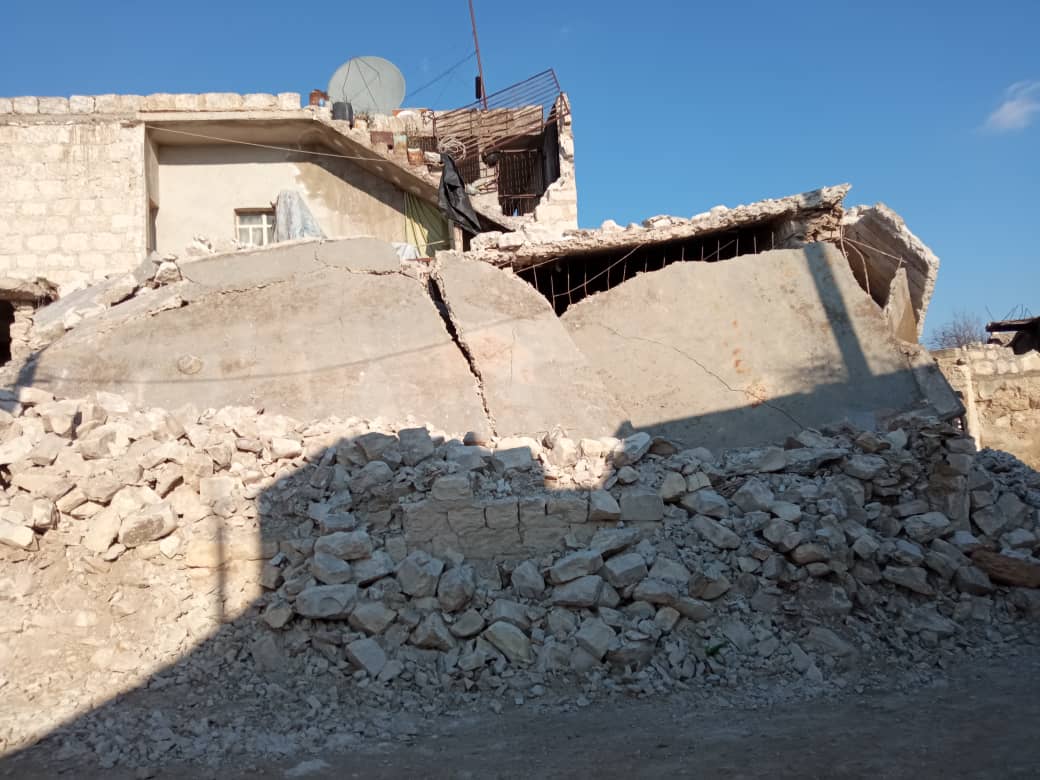Target Media Platform – Ahmed Katma
An eyewitness among the local Kurdish residents of the Jindires region, located in the Southwest of Afrin in Northwestern Syria, provided details of events that have recently taken place after the devastating February 6 earthquake with the epicenter in Pazarcik/Kahramanmaras.
The eyewitness told the Target Media Platform: “We are residents of Jindires, but we currently live in the surrounding villages because nobody dares to return. My son-in-law and his daughter died in the earthquake while we were able to save my daughter and her child.”
The magnitude of the earthquake at the epicenter reached a magnitude of 7.8 on the Richter scale and is considered to be one of the strongest earthquakes to hit the region in the past eight decades. As of Sunday morning, more than 24,000 people had died in Turkey alone.
The eyewitness continued: “On the night of the earthquake it rained and we called out to the survivors and when we heard the voices of those buried, we worked together to rescue them as quickly as possible. Because of the lack of technical possibilities, we started to remove the rubble with primitive means and objects. Later, a group of al-Sharqiya members (armed opposition faction from the SNA, ed.) used bulldozers and removed the rubble from their relatives while we waited for them to finish. After that, they came and took our sons out, but they were already dead.”
Turkey occupied the predominantly Kurdish region of Afrin in Northwestern Syria after launching a military operation under the title Operation “Olive Branch” on January 20, 2018, which lasted until March 18, 2018. The Syrian Kurds speak of a “heroic resistance“, displayed by their fighters in 58 days of bitter fighting, in which the air force decided the fight in favor of Turkey and the Syrian opposition factions it supported.
The eyewitness also recounted the discriminatory character of the rescue operations against the original residents of Jindires: “Each party was on its way to rescue its relatives. There were good and bad people present. The bad people didn’t provide any help, and some of them, under the threat of gunfire, grabbed the bulldozers to save their relatives. We helped some of them to get our turn. Everyone was included.”
Regarding theft and looting in Jindires, he said that they heard about the looting, but it was conducted by people who were later settled there and did not belong to the original Kurdish population. “Aid is coming from areas, unaffected by the earthquake. There are also Arabs who are poor and receive no help. It can be said that the aid goes to those who are in charge here (referring to the preference given to the families of armed groups who receive food rations for the region, ed.)”.
The eyewitness appealed to the donors and volunteers who want to help in Jindires to support them with financial help as the rest of the aid would never reach them, explaining that the best way is to join a group of “conscientious” people in Jindires so that they can help those affected fairly. He added: “Do not send any bread, tea, blankets or other materials, because our people (Kurds of the region, ed.) will not receive any of them“.
Regarding the general condition of Jindires and the destruction of the city, he told Target: “You can say that Jindires has become a ghost town and entire families have been victims of the earthquake. In terms of fabric, there are around 290 buildings in the center of Jindires, of which around 260 have been destroyed while the rest have been damaged and have become uninhabitable.”
He further spoke about the victims of the earthquake concerning the population structure of Jindires. The predominantly Kurdish population of the Afrin region was largely displaced during the Turkish invasion in 2018, with the resettlement of mostly non-residents and families of the armed opposition groups taking place at the same time. Referring to Jindires, he said: “We estimate that the percentage of Kurds before the earthquake was 30%, while 70% were resettled. I believe that the most affected are foreigners from the region, who mostly live in buildings that are now largely destroyed, while the majority of Kurds reside in simply constructed houses.“
He added: “One can say that the proportion of Kurds in the multi-story buildings (most of which are destroyed or demolished, ed.) is between 10 and 15%”. He further added: “If the Kurdish casualties in Jindires are around 500 to 600, then I believe the total civilian casualties can reach up to 3,000, especially since the Kurdish residents of the buildings are mainly composed of small families, such as B. newly wed couples”.
Sources from the Target Media Platform in Jindires and anonymous sources said that gunmen, supervising the salvage and clean-up operations took advantage of this disaster for looting and robbery and continued to say, “The gunmen and settlers are stealing jewelry and money from the corpses of the victims and their abandoned homes”.

